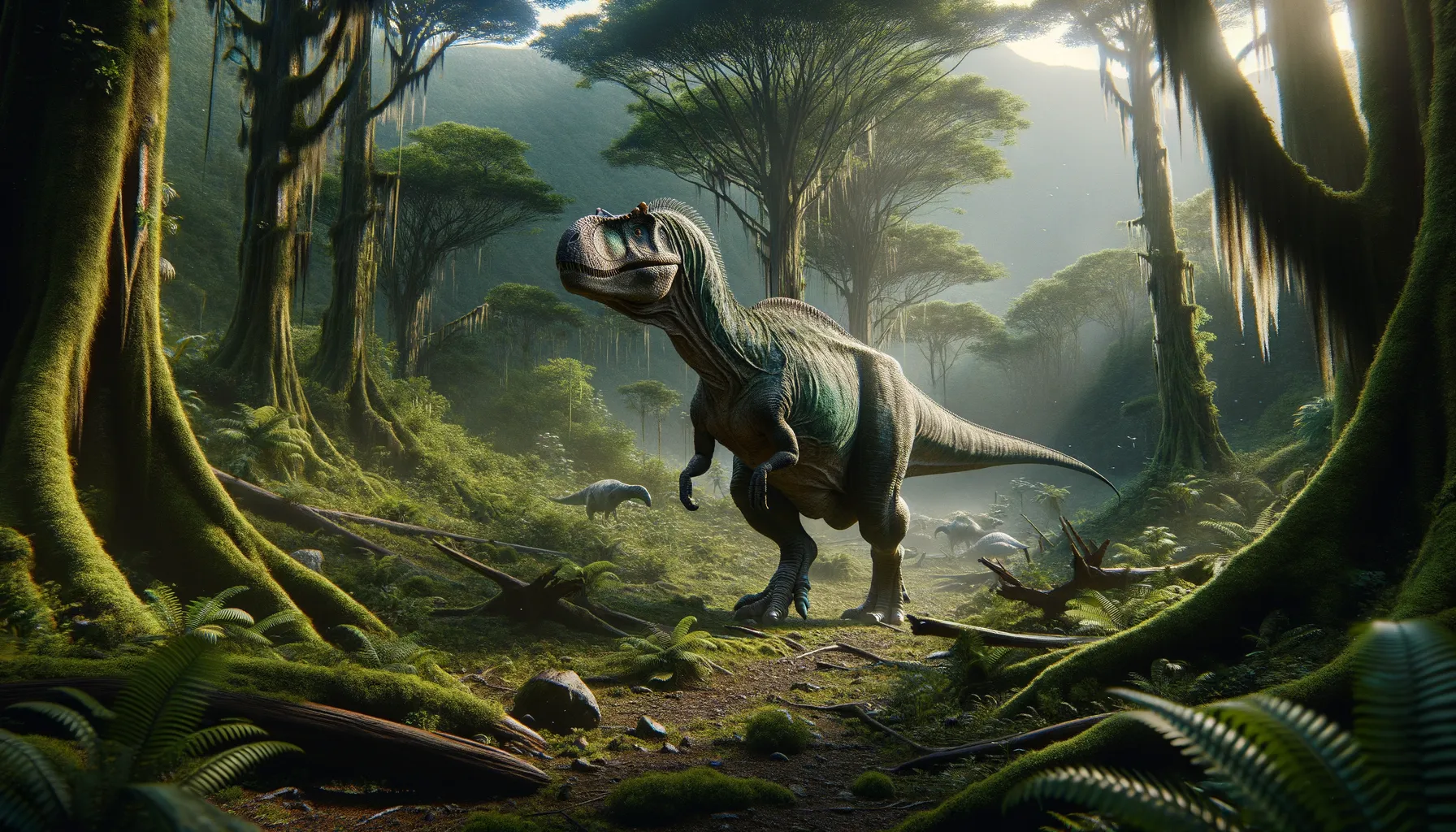
Aristosaurus
Majesty on four legs, conqueror of the plains.
Period
Cretaceous
Length
About 30 feet from head to tail.
Height
Around 10 feet tall at the shoulders.
Weight
Approximately 2 tons.
Aristosaurus was a large herbivorous dinosaur from the late Cretaceous period, known for its robust build and relatively moderate speed. Its fossils, first uncovered over a century ago, have provided valuable insights into its behaviors and lifestyle. This dinosaur adapted well to various environments, enabling it to thrive in diverse ecosystems across the ancient landscapes of South America.
Diet
Aristosaurus was a herbivore, feeding primarily on the vegetation available in its environment. It likely consumed a variety of plants, including ferns, cycads, and conifers, which were abundant during the Cretaceous period.
Hunting
As a herbivore, Aristosaurus did not engage in hunting. Instead, its primary focus was on foraging and consuming plant material. Its size and thick skin likely provided protection against predators.
Environmental challenges
Aristosaurus faced several environmental challenges including climate fluctuations and changes in vegetation. The late Cretaceous period saw shifts in temperature and sea levels, affecting the habitats it relied on. Competition for resources with other herbivores also posed a significant challenge, necessitating adaptations in feeding strategies and migratory patterns.
Speed
Moderate, suitable for a large herbivore.
Lifespan
Lived around 20 to 30 years on average.
First discovery
Discovered in the early 1900s in South America.
Fun Facts
- Aristosaurus was a medium-sized herbivorous dinosaur that lived during the late Jurassic period.
- Its name, Aristosaurus, means 'noble lizard', reflecting its elegant and somewhat regal appearance.
- Fossils of Aristosaurus have often been found in clusters, suggesting they may have lived or traveled in groups.
- Aristosaurus had a long neck and tail, which it used both for reaching high vegetation and for balance when moving.
- Despite its size, it was surprisingly light on its feet, possibly aiding in escaping predators.
- Aristosaurus is believed to have had a unique frill or crest on its head, possibly used for display or thermoregulation.
Growth and Development
The growth and development of Aristosaurus were typical of large herbivorous dinosaurs, involving a prolonged juvenile period before reaching full size. Its growth rate was influenced by environmental factors such as food availability and climate conditions. Juveniles were more vulnerable to predators, necessitating group living for increased protection.
Habitat
Aristosaurus inhabited a variety of landscapes, ranging from lush forests to open plains. Its adaptability allowed it to thrive in different environments, depending on the availability of vegetation. These habitats provided shelter and ample food sources, essential for its survival.
Interaction with other species
Aristosaurus likely interacted with a variety of species, including other herbivores and predators. While it generally maintained a peaceful existence, conflicts could arise over resources. Its large size and strength deterred many potential threats, though it would have been vigilant against predator attacks.
Natural lifespan
Aristosaurus had a natural lifespan of approximately 20 to 30 years.
Reproduction
Reproduction in Aristosaurus involved laying eggs in nests, likely in communal nesting sites for protection. The eggs were incubated using environmental heat, and hatchlings were relatively independent soon after birth. Parental care might have involved guarding the nests from predators.
Social behaviour
Aristosaurus likely exhibited social behavior, living in groups for protection and foraging efficiency. Herding provided safety in numbers against predators, and facilitated the sharing of information about food sources. Social structures might have included a dominant individual leading the group.
Fossil locations
Fossils of Aristosaurus have been primarily found in South America, indicating its presence in the continent's diverse Cretaceous ecosystems. These fossils have been unearthed in regions rich in sedimentary deposits, providing a glimpse into the ancient environments it once inhabited.
